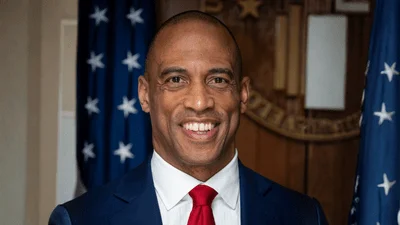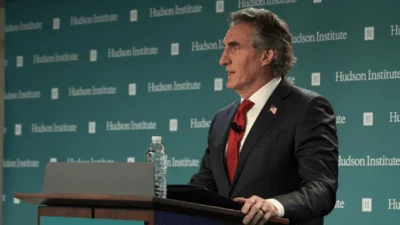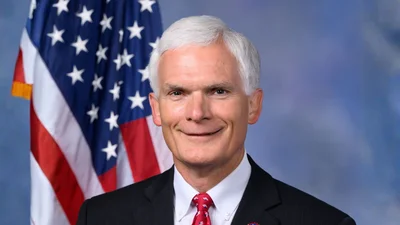The Treasury Borrowing Advisory Committee (TBAC) met in a closed session at the U.S. Department of the Treasury on July 29, 2025, to discuss recent fiscal developments and provide recommendations on government debt management for the upcoming quarters.
All committee members attended, along with Barrie Ringelheim from Citigroup assisting the Committee Chair. Several officials from the Treasury and staff from the Federal Reserve Bank of New York were also present.
Director of Policy & Planning Hunter McMaster, Deputy Assistant Secretary for Federal Finance Brian Smith, Director of the Office of Debt Management Fred Pietrangeli, and Deputy Director Tom Katzenbach welcomed attendees. Pietrangeli presented updates on federal receipts and outlays through the third quarter of fiscal year 2025. Receipts reached $4.01 trillion, up 7% compared to last year due mainly to growth in withheld taxes tied to wage and employment increases. Outlays totaled $5.3 trillion, marking a 6% rise largely attributed to higher interest costs, inflation adjustments to transfer payments, and increased defense spending. Adjustments for tax deferrals indicated that receipts would have been 9% higher year-over-year; similar calendar adjustments showed outlays would have been up by 5%.
Pietrangeli also addressed projections for privately-held net marketable borrowing. He noted that current auction sizes should suffice for fiscal year 2025 but identified larger financing gaps forecasted for fiscal years 2026 and 2027. Primary dealers expressed continued uncertainty about future borrowing needs due to unclear monetary and fiscal policy directions as well as economic outlooks.
Debt Manager Joshua Stachura reviewed expectations among primary dealers regarding coupon issuance. Dealers unanimously expect nominal coupon issuance to remain unchanged at the August refunding but anticipate increases in coupon issuance starting in 2026 or later. For Treasury Inflation-Protected Securities (TIPS), most dealers expect no change in the size of the August 30-year TIPS reopening but foresee $1 billion increases each for September’s 10-year TIPS reopening and October’s new issue of five-year TIPS.
Deputy Director Katzenbach summarized dealer feedback on rebuilding the Treasury General Account after an early-July debt limit increase. Dealers generally viewed Treasury’s plans outlined in its July 8 special announcement as reasonable and said initial bill supply increases had been well-received by markets. They suggested there is enough demand to absorb further bill supply expansion with only modest volatility if managed gradually and focused on short-dated bills. The median estimate was that Treasury could raise bill supply by $260 billion over a month or $600 billion over a quarter without significant price impact relative to fair value. Current forecasts project aggregate bill supply will stay below its mid-February peak through September.
Debt Manager Nicholas Chisholm discussed potential changes to Treasury’s buyback program based on dealer input. Most favored increasing buybacks in both the 10-20 year and 20-30 year sectors to support liquidity, along with more frequent operations overall. Some recommended expanding liquidity support buybacks into shorter maturities up to two years; several saw room for larger cash management buybacks in these areas as well. Dealers advised against reducing maximum buyback amounts and were generally satisfied with current processes but suggested possible long-term enhancements such as yield spread-based execution or switches versus benchmark securities.
Committee discussions then turned toward potential enhancements to buybacks more broadly. A presenting member noted rising dealer inventories and higher offer-to-max ratios in long-end buybacks this year while stating that larger buybacks could be considered for longer maturities without significantly affecting maturity profiles or established objectives set last year. The member proposed developing yield-spread bidding or duration-neutral switches against benchmarks as longer-term improvements requiring system upgrades, as well as broadening counterparty eligibility for improved results and insights into secondary market liquidity demands.
Committee members debated whether operation sizes should increase: while some felt current levels were appropriate, most recommended raising maximums—split between those preferring limits only on long-end operations versus those supporting increases across all sectors.
After lunch adjournment at midday, discussions resumed with a summary report delivered by the Chair to Deputy Secretary Michael Faulkender followed by brief commentary on recent market trends.
For upcoming quarters, TBAC recommended maintaining nominal coupon and floating rate note auction sizes at present levels while continuing planned $1 billion increases in five- and ten-year TIPS offerings. The committee also discussed when it might be suitable for Treasury to update guidance on auction sizes given investor demand trends and other considerations.
The meeting concluded at 2:10 p.m., with formal certification provided by Brian Smith, Deputy Assistant Secretary for Federal Finance at Treasury, and Deirdre Dunn, TBAC Chair.





